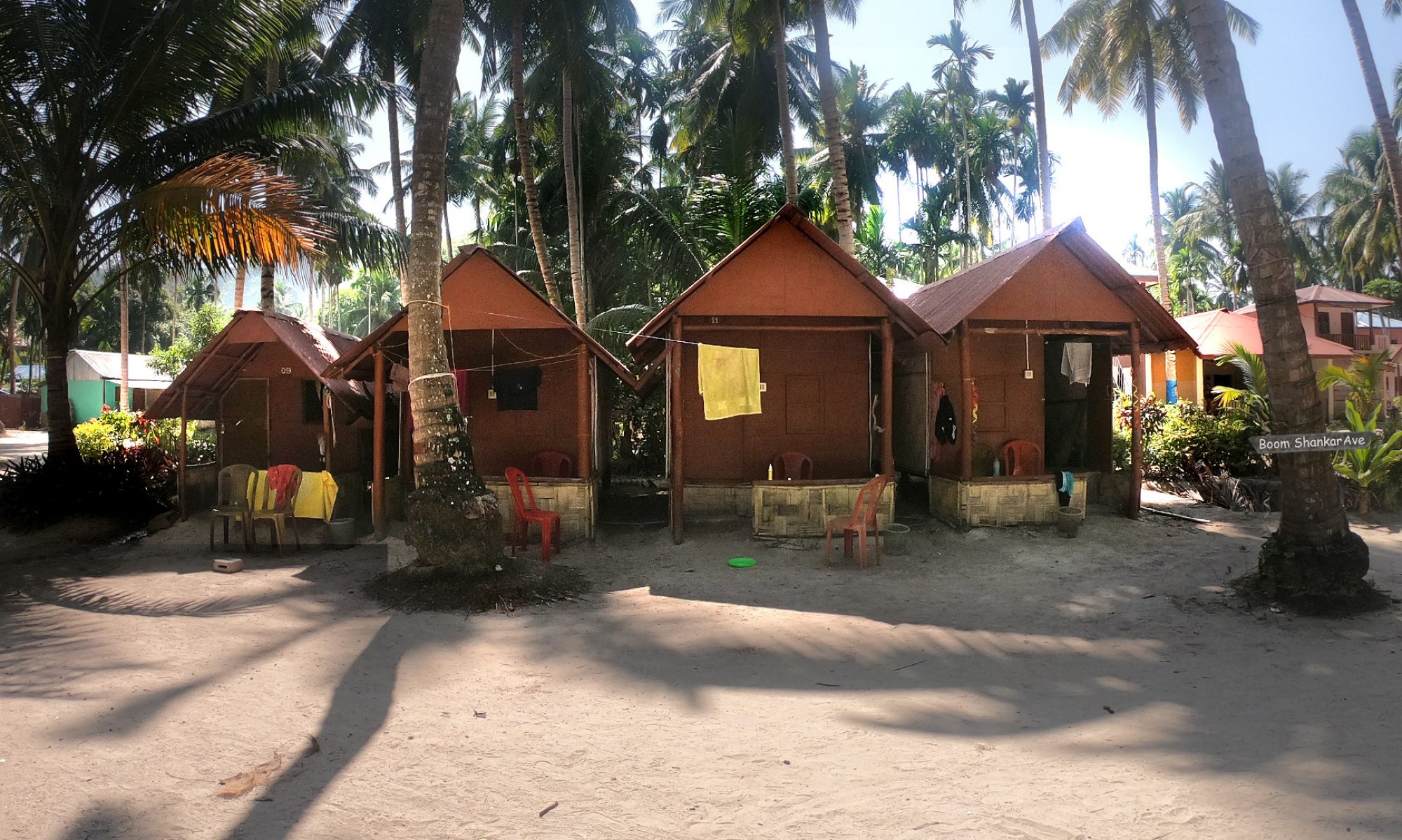I am currently back in the Andaman and Nicobar Islands and enjoy the quiet and tranquility that is found on all islands (except the capital Port Blair and the island of Havelock). Some places are a little too quiet for me. After a few days, I miss already some people and some infrastructure, because I’m not used to live in (with) the simple nature. One night on a little island, I stayed in a simple bamboo hut that had large gaps between the bamboo sticks and was built very simple. I could hear a lot of animals at night and I realized that I am not alone here. There are also a lot of snakes (in water or on land), there are about 300 different species on the Andaman Nicobar Islands, of which about 250 are likely to be poisonous. I noticed that there are still many places on this overpopulated earth where nature is intact, clean and in harmony.
Snake on Neil Island
I also played a few concerts in hotels and restaurants, and of course every evening I jamed in front of my hut. With various travelers in front of my beach hut. This travel I took my Roland Amp (Streetcube), micro + equipment with me, there were of course some people came to my hut and there was music going on into the night and celebrating a small beach hut party all together. The next day a complaint came from the hut manager and he said that it is not allowed to play music until the morning. I thought okay, no problem. However, only a few hours later fifteen civil servants came and turned all the huts upside down and checked them. I can not say what they were looking for, but they found what they were looking for by a young finish guy, but it was too little for the police and refrained from questioning. Similar to last year (see Mango Action Blog), there was a tense mood among the travelers. Some backpackers left their huts after the raid, and a few days later I took a ferry and drove to the nearest island.
beach huts jam session
On my last visit in March 2019, I was only on the island of Havelock for a week and actually had no opportunities to get to know the locals better. This time I already had very interesting conversations with people who grew up in the Andaman Islands. For example, I had a conversation with the owner of some beach huts, who told me that his parents emigrated from Calcutta to the Andaman Islands in 1930. At that time, his parents received a plot of land of around 30 hectares from the Indian government in the hope that some islands would be populated. He said that in his youth he had one day to eat and nothing the next day. Many things like food, electricity, oil, medicine, roads, tools and many other things simply weren’t there. He said that the islands fought for survival every day.
Free property owned by Hari Shankar beach hut owner
Another resident told me about the tsunami in 2004. At that time, more than 4,000 residents died in the Andaman Nicobar Islands and many were injured. He said there were some people who have been traumatized since then. For example, some contemporary witnesses have avoided going swimming in the sea since then. Some fishermen have looked for a new job or others have moved far from the sea to the hinterland.
A young student also told me that she has been particularly interested in the Seth Islands since the American John Allen Chau was killed in 2018 when he wanted to get in touch with the indigenous people. The fisherman who brought the young priest to the Seth inslands got five years prison. The ambitious missionary apparently started an attempt in 2010 to reach the Seth Island residents. She also told me that two fishermen were killed in 2006 when they got too close to the islands. Today the Indian government controls the area of the Seth Islands very much. The Indian government respects the decision that the indigenous people want to stay alone without any outside contact. This is not so obvious when you think of other larger nations. There seems to be a key reason why the locals want to be left alone. During the English colonial period in 1879, a family with 4 children and their parents were shipped to Port Blair for an examination. The parents got ill and died, probably due to an infection. According to Wikipedia, it is conceivable that the children who have returned will infect other Sentinel, with devastating consequences for the tribe. Since then, the indigenous people have regarded all immigrants as a threat.
I also had a special conversation with a military pilot, whom I met at a hotel concert in Port Blair. He said that he had a flight around the Seth Island and saw that the islanders tried to hit his helicopter with arrows. He said that these people are still living in the Stone Age and probably have no idea about the technically developed outside world. You have to imagine what it means for the islanders to see a helicopter. This is probably still a big story on the island to this day. Perhaps comparable to us as if we saw an UFO flying in the sky. Still, he thought that these people may live happier than we do in civilization.
Hotel concert in Port Blair, afterwards I had a conversation with a military pilot
I incorrectly reported in my Andaman Nikobar VLOG from March 2019 that Heinrich Harrer visited the Sentinelese, I would like to correct this. In 1974 Heinrich Harrer filmed the island only from afar on his Andaman expedition.
